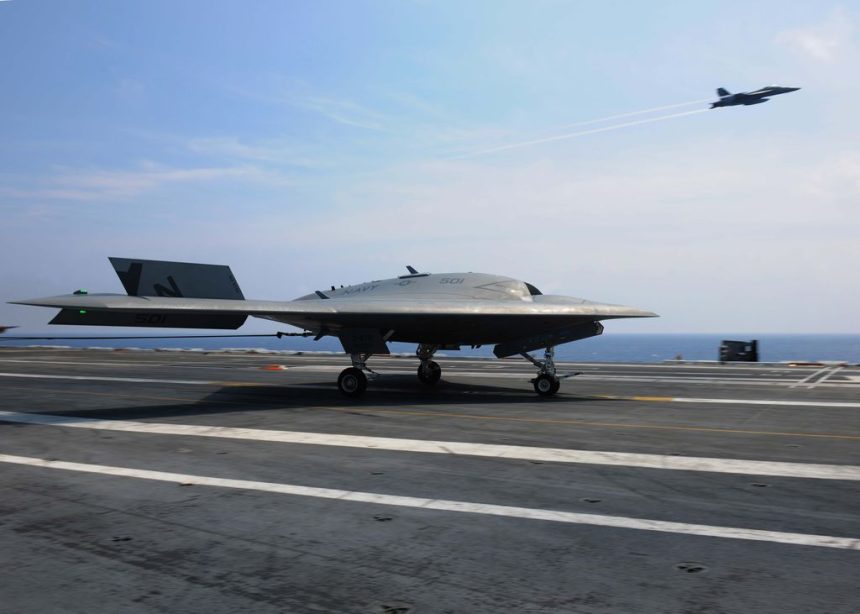With a series of tests conducted aboard USS Theodore Roosevelt the Navy’s unmanned X-47B drone demonstrated its ability to operated safely and seamlessly with manned aircraft.
On Aug. 17, the U.S. Navy successfully tested its X-47B UCAS (Unmmaned Combat Air System) alongside an F/A-18F Hornet in a flight deck working environment.
The unmanned aircraft (destined to become USN’s first “killer drone”) completed a series of tests, which included a catapult launch and arrested landing, which demonstrated its ability to operate safely and seamlessly with manned aircraft.
After hitting some important milestones operating as a singleton, the next step was to occupy the carrier pattern with the manned aircraft in order to test whether the UCAS is able to land and vacate the landing area within the time lines that are required for blue water ops aboard a U.S. flattop.
According to the U.S. Navy:
“The first series of manned/unmanned operations began this morning [Aug. 17] when the ship launched an F/A-18 and an X-47B. After an eight-minute flight, the X-47B executed an arrested landing, folded its wings and taxied out of the landing area. The deck-based operator used newly developed deck handling control to manually move the aircraft out of the way of other aircraft, allowing the F/A-18 to touch down close behind the X-47B’s recovery.
This cooperative launch and recovery sequence will be repeated multiple times over the course of the planned test periods. The X-47B performed multiple arrested landings, catapults, flight deck taxiing and deck refueling operations.”
Future plans include nighttime taxiing and flying.
Image and Video credit: U.S. Navy
















